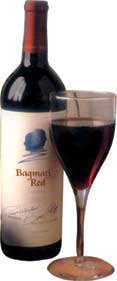 On a recent walking tour of various nooks and crannies in the Valley to inspect areas of archaeological significance, I had the distinct privilege of savouring the idyllic settings, the interesting aromas and the bucolic environs of the rivers, streams, brooks and creeks that flow through our great capital. Every ancient civilisation is known by the rivers that ran through them. No civilisation is complete without a river, a river is for a civilisation what a flush tank is for a WC. Take the Nile Civilisation, Euphrates Civilisation, Indus Valley Civilisation and, in our own neck of the woods, the Tukucha Open Sewer Civilisation.
On a recent walking tour of various nooks and crannies in the Valley to inspect areas of archaeological significance, I had the distinct privilege of savouring the idyllic settings, the interesting aromas and the bucolic environs of the rivers, streams, brooks and creeks that flow through our great capital. Every ancient civilisation is known by the rivers that ran through them. No civilisation is complete without a river, a river is for a civilisation what a flush tank is for a WC. Take the Nile Civilisation, Euphrates Civilisation, Indus Valley Civilisation and, in our own neck of the woods, the Tukucha Open Sewer Civilisation. There are no historical records of exactly why some of these cultures withered and died, but carbon-dating of ancient garbage piles on the outskirts of Moenjodaro seem to prove that they collapsed under the weight of their own trash. This is why it is important to look at the state of our own Kathmandu Valley rivers before it is too late, and we too are wiped out by the relentless march of history, geography and arithmetic.
After my brief inspection trip, I am glad to report that these fears of imminent civilisational collapse are totally unfounded. In fact, our Kathmandu Valley rivers are in fine shape. There is no danger of our civilisation withering and dying at all, at least not in the unforeseeable future. And, if I may say so myself, everything is hunkydory in the boondocks. It is now becoming apparent that we have worked ourselves up into a needless frenzy of worry over the Bagmati and Bishnumati. These are mature rivers, and can take perfect care of themselves without us becoming unduly concerned.
Let us begin by looking at the aroma they emanate. Unlike sterile European rivers, the Bagmati is a biodiversity sanctuary. The waters teem with microscopic organisms which have been rescued from the brink of extinction by the raw sewage that flows into the river, replenishing it with valuable nutrients. River sampling is an art, and is a unique individual experience making use of our senses in order to appreciate its strength and character.
The Bagmati on a recent morning had a brut non-vintage redolence. The light-golden straw-colour with its effervescent bubbles was very soft on the nose, rich and well-structured. The powerful aroma is a combination of digestive biscuits and radish gundruk.
Over at the Bishnumati, the water is deep green and has an attractive nose with intense notes of semi-digested momos in spice. It is supple on the palate, round, velvety but well-balanced, and very reminiscent of a 1997 Riesling Cuv?e Sainte Catherine.
By afternoon, the anaerobic fermentation of the sludge along the bed of the Tukucha near the western wall of the Rastriya Samachar Samiti is releasing a lively elegance conveyed by citrus aromas, with a hint of roasted almonds and a bouquet of buffalo innards. This a strong sample, and not for the faint-hearted.
Among the reds, the Hanumante is a deep crimson since it is situated downstream from a carpet dyeing unit. Against the light, the water looks full-blooded and is imbued with a racy nose with a hint of licorice, a touch of gameyness and the plethora of unidentified floating objects giving it a robust frutiness and a rounded finish.
But for the premium brand among reds, there is nothing to beat the Bagmati at Chobhar which has a strong purply-red hue with a tangy floral aroma of over-ripe grapefruit. There is slight froth due to incomplete enzyme activity, but the finish is rich and persistent.



